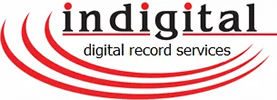Scanning a piece of paper is typically an easy task that is handled with a simple scanner. When you need a book scanned, the process is a lot different. Every book has different attributes, styles, and values that changes the way books are scanned.
If you have business manuals, published books, or other books you want to digitally archive, learn about your book scanning options and how the process works. With some understanding, you can choose the best option for all of your business book scanning needs.
Destructive Book Scans
One of the first decisions you need to make is whether you want to keep the physical copy of the book or not. One way to get quality scans of books is through a destructive book scan, but the book’s physical copy will be destroyed.
In a destructive book scan, professional scanners will carefully cut the spine off a book. Once removed, each page is individually scanned through a traditional scanning process. The even and flat scans will ensure all of the information on each page is captured.
Professional scanners also have the experience and ability to scan pages without text or images bleeding through from the other side. Translucent pages could lead to visual distractions if the pages are not scanned properly.
Ideally, you want to choose destructive book scans if the condition of the book is not good enough to keep or if you have multiple copies of the book. Once you receive the digital file of your book, you could always reprint the pages to have another physical copy on hand.
Overhead Book Scanners
If you want to preserve your copy of the book, then professional scanners will complete an overhead scan. During an overhead scan, a book is laid flat and mounted down on a scanning bed. A digital scanner hangs over the book, which looks similar to a desk lamp.
The overhead scanner can capture all the details without damaging to the book or creating harsh shadows on the edge of pages. If you’ve ever made copies of a book, you may notice the inner spine is often curved and hard to read when pushed down in the scanner. An overhead scanner eliminates this problem.
An overhead book scanner can supply both color and grayscale copies of books. Professional scanners go page by page and can often see real-time scans to ensure each page scans correctly.
Optical Character Recognition
When you scan a book and create a digital copy, you should decide how you want to use the book. If the book is a research manual with specific instructions, then you may want to consider scanning services with optical character recognition. The process will analyze the words in the book and create a searchable document.
With the document that has ran through the OCR process, you can look up specific chapter names, phrases, or sections. The optical character recognition is ideal for books because of their length. It’s a lot harder to scroll through a PDF file than it is to flip through a physical book and scan pages. With search features, you can look up and access sections of a book within a few seconds.
If you have multiple books, then you can do larger searches. For example, if you own a real estate company, you could search for “reverse mortgage” and find all of the books with references on reverse mortgages.
The character recognition can also pick up details besides the main text. Examples of this include picture captions or footnotes.
For more information on book scans and our professional services, contact us at Indigital, Inc. We will go over your book scanning options and give you estimates for various scanning projects you need done.

